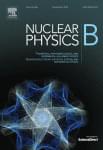We explore the possibility that a new universe can be created by producing a small bubble of false vacuum. The initial bubble is small enough to be produced without an initial singularity, but classically it could not become a universe — instead it would reach a maximum radius and then collapse. We investigate the possibility that quantum effects allow the bubble to tunnel into a larger bubble, of the same mass, which would then classically evolve to become a new universe. The calculation of the tunneling amplitude is attempted, in lowest order semiclassical approximation (in the thin-wall limit), using both a canonical and a functional integral approach. The canonical approach is found to have flaws, attributable to our method of space-time slicing. The functional integral approach leads to a euclidean interpolating solution that is not a manifold. To describe it, we define an object which we call a “pseudomanifold”, and give a prescription to define its action. We conjecture that the tunneling probability to produce a new universe can be approximated using this action, and we show that this leads to a plausible result.
